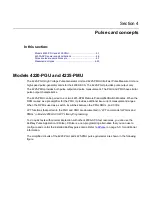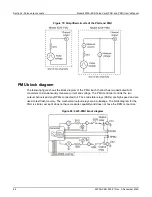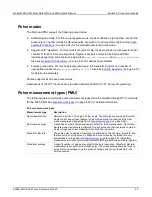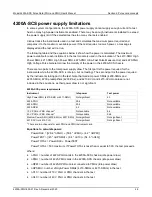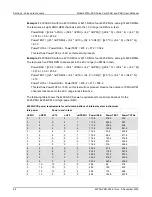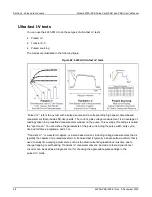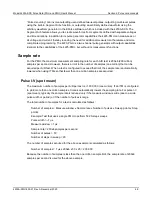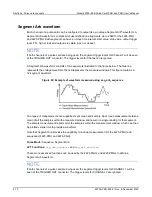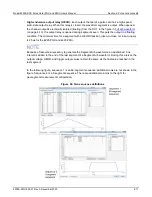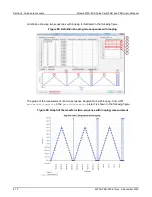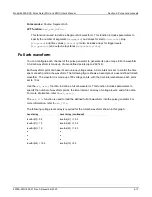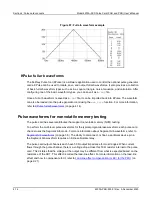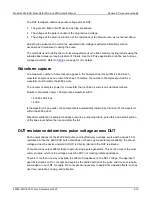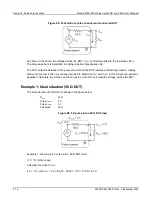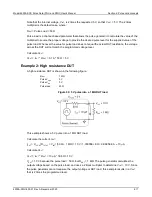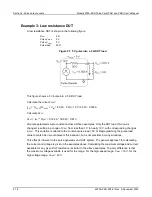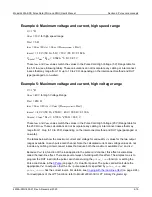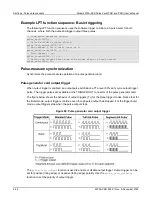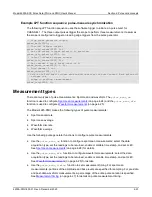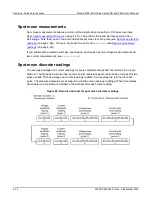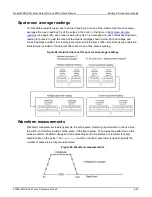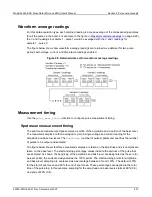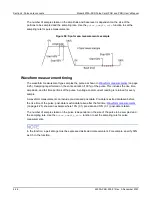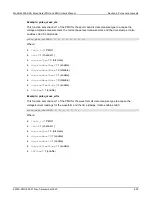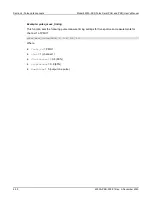
Model 4200A-SCS Pulse Card (PGU and PMU) User's Manual
Section 4: Pulse card concepts
4200A-PMU-900-01 Rev. A December 2020
4-15
The DUT resistance determines pulse voltage across DUT:
•
The gate of a flash or NVM device has high impedance.
•
The voltage at the gate is double of the programmed voltage.
•
The voltage at the drain is a function of the resistance of the drain-source, as mentioned above.
Adjusting the pulse level to match the expected drain voltage is performed iteratively with an
oscilloscope to measure V
D
during the pulse.
The methods used to define the multi-level waveforms used in flash memory testing include using the
subsite stress/measure looping feature of Clarius. Use the KPulse application to define each unique
voltage waveform. Refer to
(on page 5-1) for details.
Waveform capture
The maximum number of rows that can appear in the Analyze sheet for an ITM is 4096. Each
waveform sample uses one row of the sheet. Therefore, the number of samples acquired for a
waveform must fit within the 4096 points.
The number of samples (rows) for a waveform that is 20.48 µs wide is calculated as follows:
Number of samples (rows) = Sample rate x waveform width
= 200e6 x 20.48 µs
= 4096
If the waveform is any wider, the sample rate is automatically lowered by Clarius to fit the waveform
within the 4096 points.
Waveform width that is sampled includes pulse rise, pulse magnitude, pulse fall, and a small portion
of the base level before the rise and after the fall.
DUT resistance determines pulse voltage across DUT
Each output channel of the 4220-
PGU pulse card is effectively a voltage source with a series 50 Ω
resistance. Since the 4220-PGU pulse card does not have any measurement capability, the actual
voltage across the device under test (DUT) is directly related to the DUT resistance.
There are many output effects that are part of using a pulse generator. This section covers the most
common issue, which is the voltage across the DUT not meeting initial expectations.
There is more than one way to explain the effect of impedance on the DUT voltage. The approach
used below relies on DC concepts and explains the settled portion of the pulse and does not require
knowledge or use of RF concepts. RF concepts are necessary to explain time-based effects, such as
rise time, overshoot, ringing, and reflection.

